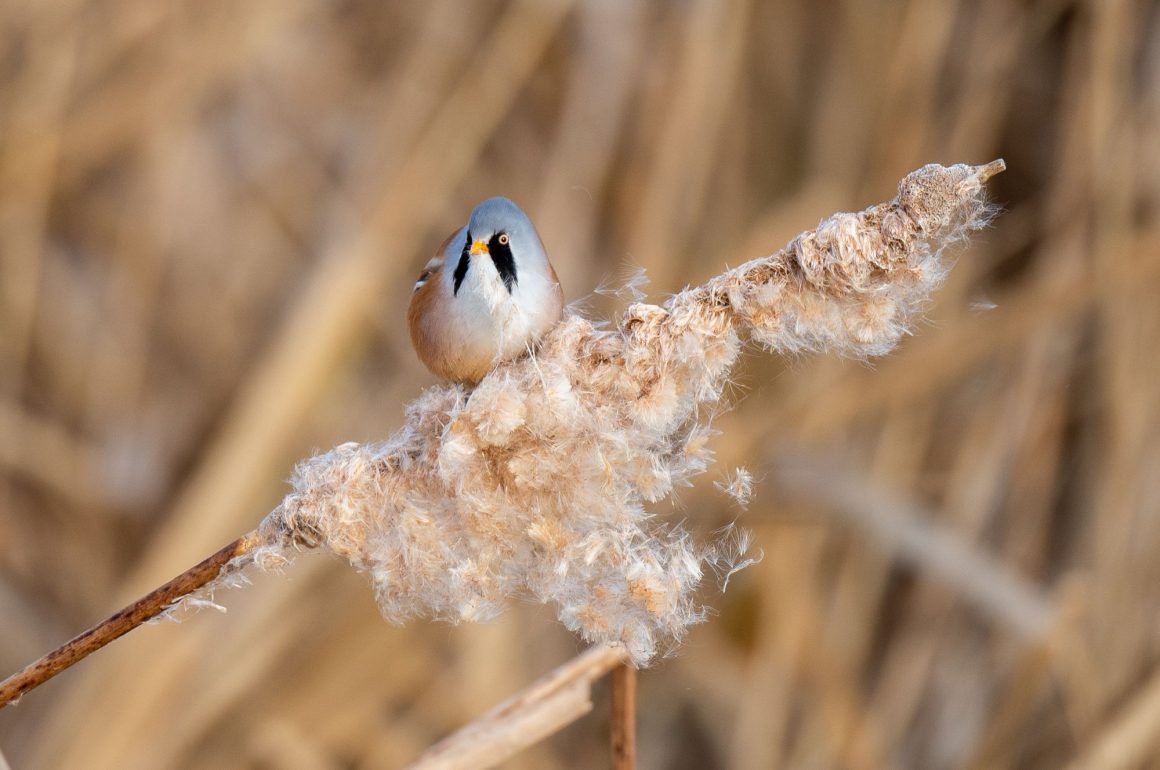
The coast and adjoining wetlands of North Norfolk have a nearly legendary essence to them, probably being the centre of British birding circles. This is for a good reason, as the area offers stunning birding opportunities. Hence it was only a matter of time until I visited this area, and luckily this time came on a trip to England last winter.
I stayed in Sheringham for two nights, giving me one-and-a-half days of birding in the area. I first did some seawatching near Sheringham, which is apparently one of the best spots in England with the right winds, which weren’t blowing when I was there. It was still decent however with several Northern Fulmars, a distant Red-throated Diver, and several probable Red-necked Grebes being highlights. At the promenade in Sheringham, I spent a few moments watching the tamest Ruddy Turnstones I’ve seen in my life, approaching me when I stood still instead of flying off, as any sane turnstone would! When a car pulled up, windows let down, and some crumbs of bread suddenly soaring out of the car, I realised why. Probably very unhealthy for these waders to eat bread and quite annoying that they’re being fed, but I still could not resist the good photo opportunity.
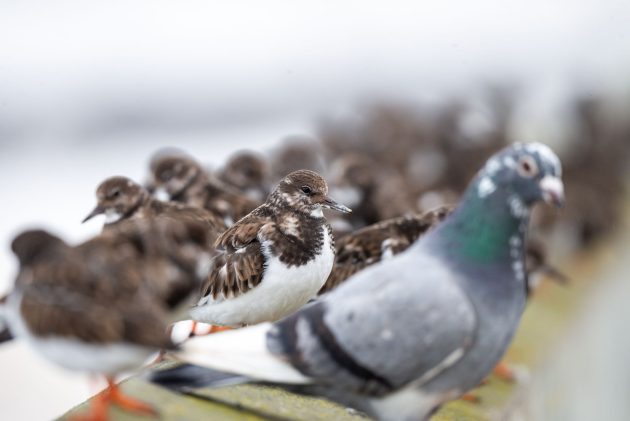
I spent most of the time at the wetlands at Cley-next-the-sea, which to begin with is a really cute name for a village. Birding was really fun here, and although I did not see any rarities, the golden sunlight made even watching a Common Redshank memorable, its red legs truly glowing. Redshanks were tolerably plentiful, and a few Eurasian Curlews were also around, which made the size difference between these birds very obvious. The curlew was also close enough for me to marvel at the pattering of its individual feathers. Like with many other birds, it’s so fascinating how the very organized and structured patterns of individual feathers result in such good camouflage as soon as the bird is at a slight distance among similarly-coloured vegetation.
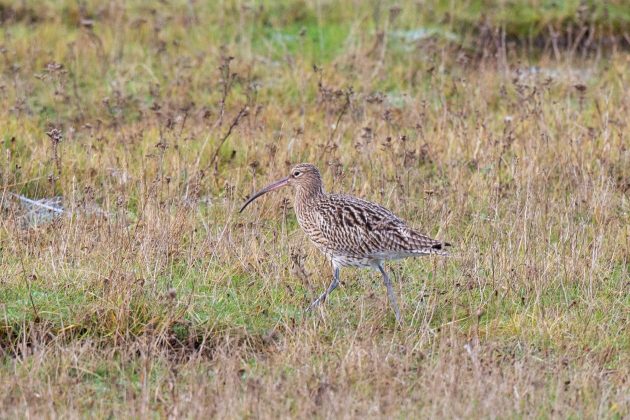
Every once in a while, the waders and several other birds in the reeds erupted as a Western Marsh-Harrier quartered low above the ground. Harriers are such an elegant group of birds and this species is no exception. This is the only harrier species in which I find the female more beautifully marked, with its cream head colouration being a lovely contrast to the deep brown rest of the plumage.
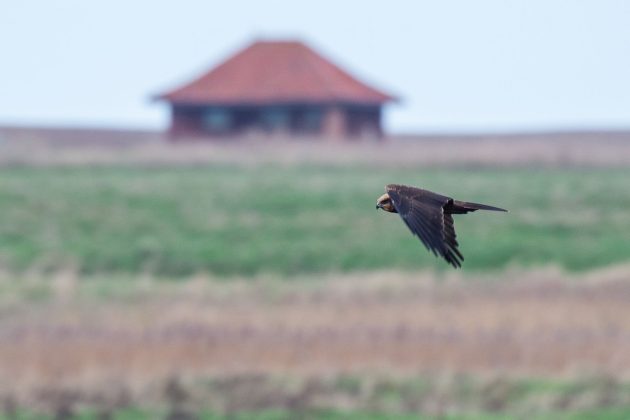
One bird that appeared not to be perturbed by any disturbance were Bearded Reedlings. I was fortunate to come across these birds several time, which I found very surprising as I had only seen them twice ever before! The first time, two males were feeding just two or three metres from the elevated path, but were pretty much impossible to photograph or observe well because of rather strong wind. The next morning however, I came across another two males before the wind picked up, which I could observe for over 20 minutes as they fed among the reeds, one individual even hopping across a frozen expanse of water. This was one of the most adorable bird sightings I’ve had in recent months, especially as I focused the scope on these birds and had a nearly my whole view taken up by the silky black teardrop-shaped feathers and beautiful wing markings. Overall, I’m not sure why I only saw males, although I was not complaining given their beautiful colouration.
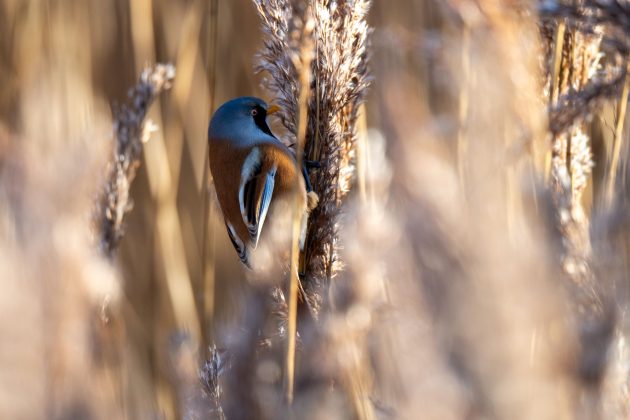
On both days, a huge group of several thousand Pink-footed Geese came in to rest, offering a very dramatic spectacle. It was very imposing to have groups of geese stretching across the sky nearly from one side of the horizon to the other, as it gave a very unusual sense of the space in the sky as they flew about, the air full of their calls. I guess this was because you usually do not have physical reference objects in the sky spread out at the same time; it almost felt as if the sky was way closer than it usually did which is of course silly, but either way it was the first time I’ve seen such a huge flock of geese.
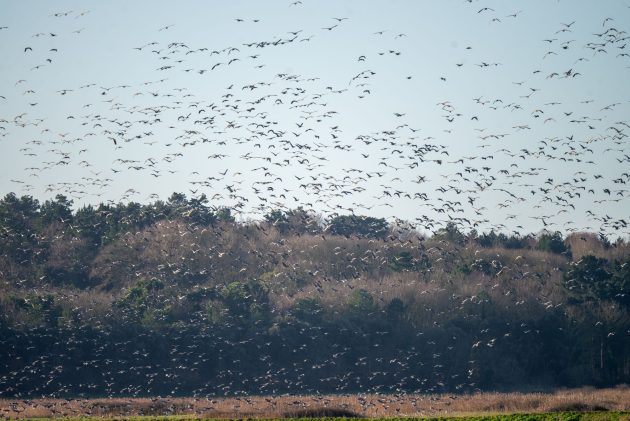
I would love to visit this area again during migration season, when there are probably at least as many birders as birds around. This was actually a very fun part about birding here, as nearly every person you came across was carrying binoculars and could tell you if there’s anything interesting about. I can only imagine the place turning into a birding mecca when all the great birds are on passage, similar to Heligoland when I was there during autumn migration a few years ago.


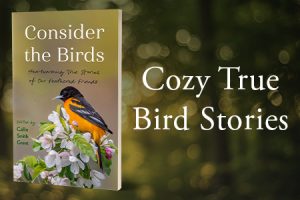

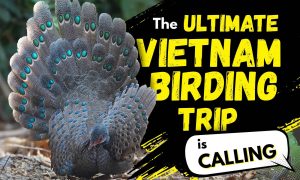
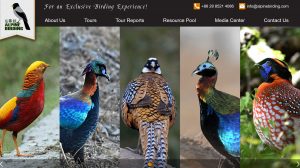
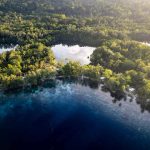
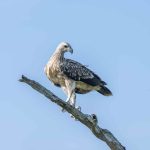

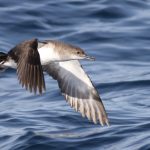
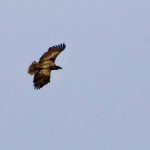

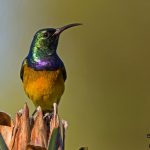
North Norfolk is my local patch, so it’s good to read that Luca enjoyed his visit here. It’s true that there are sometimes more birders than birds…
Oh that’s a great local patch to have! Perhaps we can do a joint outing there one day – I’ll move to the UK in October so I’d like to visit the area.